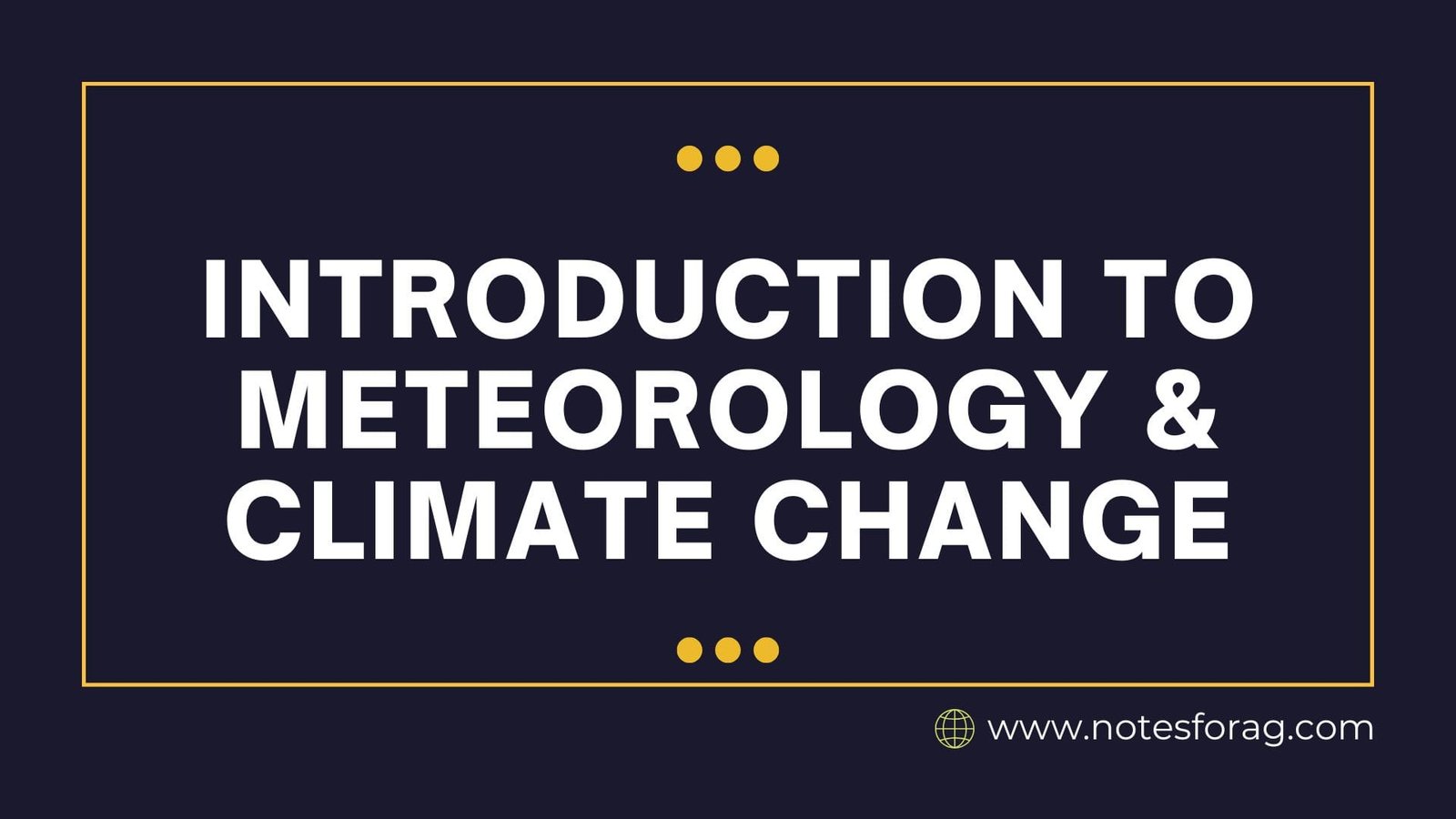Meteorology is the branch of atmospheric science that studies the Earth’s atmosphere and weather processes. It focuses on understanding short-term atmospheric conditions such as temperature, humidity, wind, and precipitation. It is crucial for accurate weather forecasting, disaster preparedness, and resource management in agriculture, aviation, and urban planning.
Climate change, on the other hand, refers to long-term changes in global or regional climate patterns over decades or centuries. These changes are influenced by both natural processes, such as volcanic eruptions and solar radiation, and human activities, including greenhouse gas emissions, deforestation, and industrialization.
Table of Contents
Importance of Meteorology and Climate Change
Meteorology
This approach helps predict and reduce the impact of extreme weather events such as storms, droughts, and floods. It helps sectors such as agriculture, transportation, and energy make informed plans and decisions. Meteorologists analyze variables such as:
- Wind and Precipitation: Indicators of air movement and prevailing weather conditions.
- Temperature: Assesses temperature levels in the atmosphere.
- Pressure: Regulates the patterns of wind and the development of storms.
- Humidity: Influences rainfall patterns and the development of clouds.
Applications of Meteorology
- Agriculture: Helps farmers with the planning of irrigation, as well as the timing for planting and harvesting their crops.
- Disaster Management: It alerts us to the dangers of extreme weather events such as hurricanes, tornadoes, and intense storms.
- Energy Sector: Aids in maximizing the generation of renewable energy sources, such as wind and solar power.
- Daily Life: Delivers predictions that influence transportation, outdoor activities, and emergency responses.
Climate Change:
Emphasizing the urgent need to address global challenges such as rising temperatures, rising sea levels, and continued loss of biodiversity, it advocates for a global effort to minimize the carbon footprint and move towards sustainable practices.
Causes of Climate Change
- Greenhouse Gas Emissions: Carbon dioxide, methane, and nitrous oxide are gases that effectively trap heat in the atmosphere.
- Deforestation: Reduces carbon absorption, increasing CO2 levels.
- Fossil Fuels: Burning coal, oil, and gas contributes significantly to global warming.
- Industrialization: Releases pollutants and alters land use.
Impacts of Climate Change
- Rising Temperatures: Leads to heatwaves and global warming.
- Sea Level Rise: Causes flooding and habitat loss for coastal communities.
- Extreme Weather Events: Intensifies hurricanes, droughts, and heavy rainfall.
- Ecosystem Disruption: Affects biodiversity, leading to species extinction.
- Human Health: Increases risks of heat-related illnesses, malnutrition, and vector-borne diseases.
Link Between Meteorology and Climate Change
Meteorology provides insights into daily weather, while climate change studies long-term trends. By analyzing meteorological data, scientists identify patterns that indicate shifts in the climate. For example, the frequency of extreme weather events, such as prolonged droughts or stronger cyclones, can be tied to climate change. Meteorology and climate change are interconnected fields that focus on the behavior of the Earth’s atmosphere over different timescales. While it deals with short-term atmospheric conditions, such as daily weather, climate change addresses long-term alterations in global and regional climate patterns. The relationship between the two is crucial for understanding and predicting both immediate weather phenomena and broader climatic shifts.
Mitigation and Adaptation
To combat climate change, both mitigation (reducing greenhouse gases) and adaptation (adjusting to impacts) are essential:
- Renewable Energy: Transitioning to solar, wind, and hydropower.
- Reforestation: Planting trees to absorb carbon dioxide.
- Energy Efficiency: Promoting sustainable practices in industries and households.
- Policy Measures: Enforcing international agreements like the Paris Accord.
- Community Action: Engaging in local conservation efforts and promoting awareness.
Conclusion
To comprehend and solve atmospheric and environmental issues, meteorology and climate change are essential. While this is concerned with forecasting the weather in the near term, climate change highlights the necessity of long-term plans to adapt to changing global circumstances and reduce their effects. When combined, these domains offer the expertise and resources needed to develop long-term fixes that protect both the environment and humankind.
Frequently Asked Question
What is meteorology?
Meteorology is the scientific study of the atmosphere, focusing on understanding and predicting short-term weather conditions such as temperature, wind, rainfall, and humidity.
How do meteorologists contribute to climate change studies?
Meteorologists provide data on weather trends, analyze extreme events, and use models to predict future climatic conditions. This information helps scientists understand climate systems and develop mitigation strategies.
Can meteorology predict climate change?
Meteorology itself focuses on short-term predictions, but the data collected by meteorologists is essential for long-term climate models that predict and analyze climate change.

